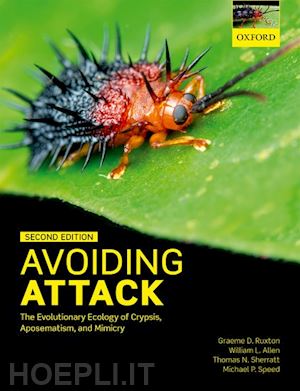Graeme Ruxton is Professor of Evolutionary Ecology at the University of St Andrews, Scotland. He has broad interests in behavioural ecology, but mostly focusses on predator-prey interactions. His main means of investigation is in various types of theoretical modelling, but this is generally linked to empirical data collection in the field or laboratory. His interests are wide in terms of ecosystems and taxonomy too, and he has occasionally published speculations on the ecologies of extinct species. Graeme's interest in predator-prey interactions has grown to include between-species communication more generally and he has a strong interest in how plants interact with animal antagonists and mutualists. William Allen is an evolutionary ecologist who investigates antipredator defences at macroecological and macroevolutionary scales. His interdisciplinary training at the University of Bristol in human, animal, and machine vision has allowed him to apply novel techniques to understanding the visual ecology of defences in diverse taxa, including felids, reptiles, and ungulates. Other research interests include intraspecific visual signalling in primates and life history evolution. He currently teaches courses on sensory ecology and the evolution of tetrapods. Tom Sherratt has a broad range of interests in the fields of behavioural and evolutionary ecology, notably predator-prey interactions, the evolution of senescence and the evolution of cooperation. Members of the Sherratt lab conduct both field and laboratory experiments, but they also attempt to develop and test biologically relevant theory. Tom also teaches courses in statistics and computer modelling. Michael Speed is an evolutionary biologist with longstanding interests in predator-prey relationships, evolution, and phylogenetics. He studied at Leeds University, where he began his work on the evolution of signalling in mimicry systems and currently lectures in evolution and behaviour at the University of Liverpool, where he is also Head of the School of Life Sciences.











